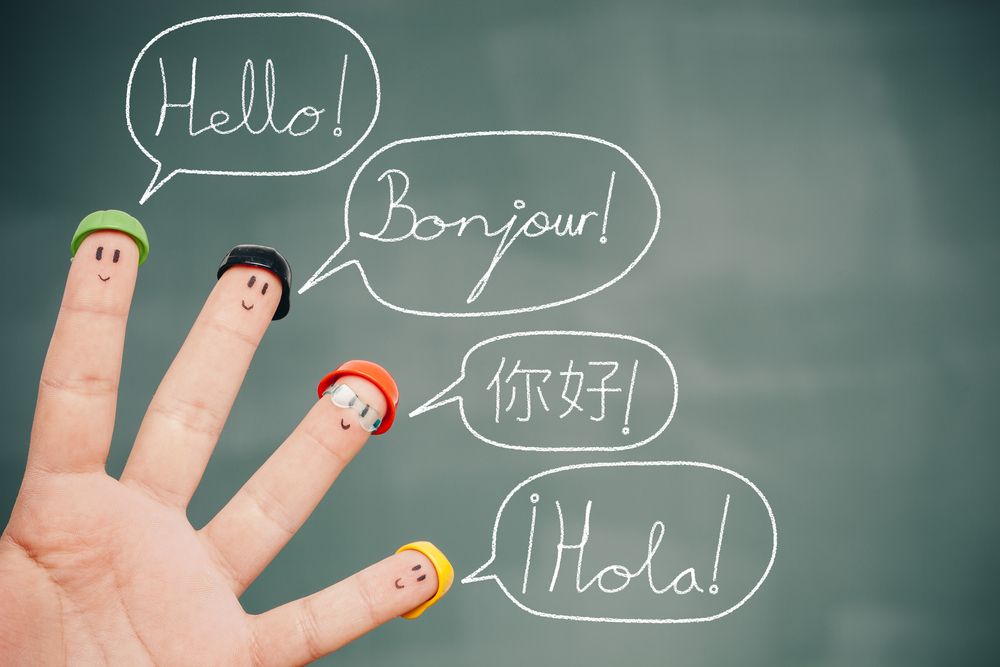Bilingual teachers in demand
Published on Tuesday, 19 March 2019
Last updated on Tuesday, 31 December 2019

Recent changes in government policy may result in increased demand for bilingual teachers - particularly those who can speak Te Reo Māori or Pasifika languages, according to industry experts.
Given that children are more successful at learning another language the younger they are, early childhood services are the ideal environment for offering children the opportunity to learn, speak and hear another language and this is driving demand for bilingual educators.
Industry confirms the need for bilingual educators
As reported by Voxy, Joanne Groenewald, lead of the school of Early Childhood Education at Hamilton's Vision College, believes the industry is crying out for more bilingual teachers - especially those who can speak Māori or Pasifika languages. This is also something that's backed up by the Ministry of Business, Innovation and Employment (MBIE), whose Occupation Outlook reporting says the demand for early childhood teachers who can speak Māori and Pasifika languages is particularly strong.
"We have an intake in East Tamaki that is generally made up of students who can speak Māori and/or Pasifika languages, which reflects the demand for multi-languages in our communities," says Groenewald.
"Our tutors are also from our communities, and speak the languages, so they are able to offer full support to our students."
According to the Ministry of Education, in 2018 there were 655 ECE services that offered either bilingual or immersion language instruction in a language other than English. The most commonly spoken languages in these settings are Māori, Tongan, Samoan and Northern Chinese.
The benefits for young children
Contrary to popular belief, young children are not confused by the introduction of multiple languages at the same time and naturally navigate multilingual environments.
According to Lead with Languages, there are also many exciting advantages for children who learn another language when they're young, such as:
- A head start - Children who learn another language before the age of five use the same part of the brain to acquire that second language that they use to learn their mother tongue, which therefore makes it easier. Younger children are also uninhibited by the fear of making mistakes, which can sometimes be an obstacle for older learners.
- Cognitive development - The length of time a student is able to devote to learning a language has a direct and positive correlation to cognitive development. Longer sentences also provide the opportunity for learners to grow alongside the additional language and culture, developing a deeper connection as they mature.
- It feeds their brains - Research shows that learning a second language boosts problem-solving, critical-thinking and listening skills; in addition to improving memory, concentration and the ability to multitask. Children proficient in other languages also show signs of enhanced creativity and mental flexibility.
- A boost to academic achievement - The cognitive benefits of learning a language have a direct impact on a child's academic achievement. Compared to those without an additional language, bilingual kids have improved reading, writing and math skills and generally score higher on tests.
- It nurtures their curiosity, cultural sensitivity, empathy and tolerance - Children who are exposed early to other languages display more positive attitudes to the cultures associated with those languages. The experience of learning a language introduces them to the world in ways they might otherwise not have experienced.
- Greater future possibilities - Acquiring a second language early in life primes the brain to learn multiple other languages, which in turn opens up a world of opportunities for them later on.
Introducing languages to your service
It's a great idea to seek out bilingual educators for your early childhood service and to encourage and empower them to speak to the children in another language for immersive learning. Not only will this aid the development of the children in your care, but it will ensure you're being inclusive (for those children who speak another language at home) and give you a competitive edge (as far as parents are concerned).
In addition to recruiting bilingual staff, it may be worth exploring a range of other strategies for incorporating more opportunities for exposure to other languages. Directors could consider:
- A structured language program - You could incorporate a children's language program into your curriculum, for a more formal approach to learning.
- Providing basic training - Support educators who show an interest in learning another language by allowing work flexibility or funding their education.
- Inviting bilingual educators and guests to visit your service - Encourage work experience and visiting teachers from other countries to spend time in the centre and engage with the children.
- Parents, family or whanau - Invite family members or friends of children in your care who speak another language to visit and speak to the class.
- Be entertained - Read bilingual books to the children and show them TV shows or films in other languages.
- Write it down - Create signs in a range of different languages for words like exit, kitchen and bathroom so the children become used to seeing the words written out.
Related Articles

Are you a great teacher?
What is it about teachers, that can improve student learning?

Timaru's first bilingual centre going strong
Meet Timaru's early childhood centre, He Manu Hou, which only opened it's doors a year ago but already it has a half-year long waiting list.

Celebrating Diverse Families
Families have changed shape and celebrating the diversity of structures boosts inclusivesness.
